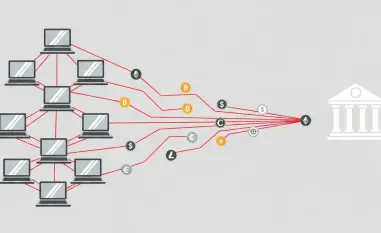In today’s digital age, the financial services sector faces an unprecedented level of cyber threats as cyberattacks grow more sophisticated, putting traditional reactive security models to the test. Financial institutions must adopt preemptive cybersecurity measures to protect their operations and maintain business continuity. This article explores the critical need for proactive security strategies to safeguard the financial services industry and respond to the escalating threat landscape posed by increasingly ingenious cybercriminals.
The Escalating Threat Landscape
The escalating threat landscape has seen the financial sector become a prime target for cybercriminals, resulting in acute concern among industry leaders. According to the International Monetary Fund (IMF), nearly 20% of cyber incidents over the past twenty years have impacted financial services, leading to financial losses exceeding $12 billion. The rise in ransomware attacks is particularly alarming, with the percentage of financial institutions targeted increasing from 34% in 2021 to approximately 65% in 2024. This concerning trend underscores the urgent need for preemptive defensive measures to combat these sophisticated threats effectively.
Traditional reactive security models are no longer sufficient to defend against these advanced threats. Financial institutions must adopt continuous, proactive, and adaptive security strategies to anticipate and mitigate threats before they cause significant harm. This shift from a reactive to a preemptive approach is essential for safeguarding the financial sector and ensuring the security and integrity of its interconnected operations. As cybercriminals continue to evolve their tactics, financial institutions must remain vigilant and forward-thinking in their cybersecurity efforts, prioritizing predictive and preventative measures.
High-Stakes Environments: A Hotspot for Cyber Threats
High-stakes environments such as trading floors and analysis departments are particularly vulnerable to cyber threats, with unauthorized software installations commonly bypassing standard vetting processes. Employees often install custom-built analysis tools, trading algorithms, and third-party data analysis software without proper authorization, increasing the risk of cyber incidents. Additionally, the widespread use of personal devices exacerbates the threat landscape, raising the potential for data leaks and regulatory violations.
To mitigate these risks, financial institutions must implement high-risk software detection solutions designed to identify and neutralize threats posed by unauthorized installations. By ensuring that only vetted and secure software is used within high-stakes environments, institutions can safeguard their operations against potential cyber threats. This proactive approach is crucial for maintaining the integrity and security of financial activities. Furthermore, establishing stringent protocols and ongoing monitoring can help keep high-stakes environments secure, protecting sensitive information from unauthorized access and exploitation.
Vulnerabilities in ATM and Point-of-Sale Systems
Attention to the vulnerabilities in ATM and Point-of-Sale (POS) systems is critical for comprehensive financial cybersecurity, as these endpoints are highly susceptible to both physical and remote attacks. Cybercriminals can easily exploit these systems by attaching illicit devices like Raspberry Pi or installing malware through USB devices, compromising the security of financial transactions. Despite their importance, ATMs and POS systems are often overlooked in cybersecurity strategies, making them prime targets for malicious actors.
Effective security for ATMs and POS systems requires a combination of vulnerability management, configuration checks, and control validation to ensure these measures are not only in place but also actively running. Financial institutions must adopt a preemptive approach to protect these critical endpoints from cyber threats, leveraging advanced technologies and continuous monitoring to detect and mitigate potential breaches. By prioritizing the security of ATMs and POS systems, institutions can protect customer data, maintain trust, and ensure the seamless operation of their services.
Cybersecurity Challenges in Mergers and Acquisitions
The process of mergers and acquisitions (M&A) presents unique cybersecurity challenges due to the integration of various systems, protocols, and technologies under significant time and financial pressures. Often, the legal, financial, and operational aspects of M&A activities take precedence over cybersecurity considerations, leading to potential vulnerabilities being overlooked. Standard assessments may fall short in promptly identifying and addressing these vulnerabilities, posing risks to the acquiring company.
To address these challenges, financial institutions should leverage dynamic and preemptive strategies such as adaptive exposure management. This approach allows for a thorough evaluation of the target company’s security posture, identifying potential threats early and preventing post-acquisition remediation costs. By incorporating cybersecurity considerations into the M&A process from the outset, financial institutions can ensure a smoother integration and protect their assets from potential cyber threats. A proactive approach to cybersecurity during M&A activities is essential to safeguard sensitive information, maintain operational integrity, and uphold the reputation of both parties involved.
Enhancing Active Security Controls
Enhancing traditional active security controls such as Intrusion Detection Systems (IDS) and Intrusion Prevention Systems (IPS) is vital for staying ahead of sophisticated cyber threats. These systems provide real-time threat detection and mitigation but rely heavily on signature-based detection, making them vulnerable to zero-day exploits and novel attack vectors. As cybercriminals continue to develop new techniques to evade detection, financial institutions must adapt their security measures accordingly.
Continuous monitoring, updates, and configuration adjustments of IDS/IPS systems are essential for maintaining their effectiveness. Financial institutions should adopt proactive strategies incorporating continuous validation and advanced threat detection solutions that leverage machine learning and behavioral analysis. By doing so, they can enhance their ability to identify and mitigate sophisticated cyber threats, staying ahead of evolving attack methods. This proactive approach ensures that security controls remain robust and effective, providing financial institutions with the necessary tools to protect their operations.
Precision in Threat Detection and Response
Achieving precision in threat detection and response is crucial for effective cybersecurity, as traditional solutions often overwhelm security teams with a high volume of alerts, including many false positives. This deluge of alerts can result in missed investigations of genuine threats, leaving financial institutions vulnerable to sophisticated cyberattacks. Modern attackers employ advanced techniques such as polymorphism, fileless malware, and living-off-the-land binaries (LOLBins) to evade detection, further complicating the threat landscape.
To address these challenges, financial institutions should employ advanced threat detection approaches that utilize behavioral analysis, machine learning, and contextual awareness. These techniques help identify anomalous activities and reduce alert fatigue, enabling security teams to focus on the most critical threats. By adopting a more precise and targeted approach to threat detection and response, financial institutions can enhance their cybersecurity posture and better protect their assets from malicious actors. Investing in advanced technologies and continuous improvement of detection methodologies is essential for staying ahead of ever-evolving cyber threats.
The Case for Preemptive Cyber Defense
In the current digital era, the financial services sector is experiencing an unparalleled surge in cyber threats. As cyberattacks become increasingly sophisticated, traditional reactive security models are proving inadequate. Financial institutions find themselves at a critical juncture, where adopting proactive cybersecurity measures is not just advisable but necessary. These preemptive strategies are essential to safeguarding operations and ensuring business continuity in the face of persistent and evolving threats.
This article delves into the urgent need for financial organizations to prioritize proactive security measures. It highlights how the escalating threat landscape, characterized by the ingenuity of modern cybercriminals, places immense pressure on outdated security practices. By investing in advanced cybersecurity frameworks, financial services can better anticipate, identify, and mitigate potential threats before they cause significant damage.
Proactive measures include regular security assessments, real-time threat monitoring, and the use of advanced technologies such as artificial intelligence and machine learning to detect anomalies. Training employees on cybersecurity best practices and fostering a culture of security awareness are also crucial components. Ultimately, these strategies help financial institutions stay ahead of threats, protect sensitive data, and maintain customer trust.













